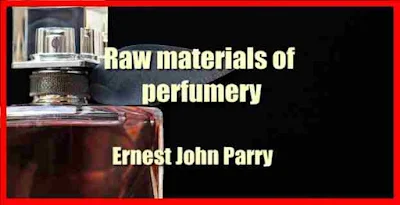Raw materials of perfumery, their nature, occurrence and employment
For, in the modern developments of the art of per- Fumery, the very highest branches of chemical research Have been called in, and it is no exaggeration to say that The last thirty or forty years of organic chemistry research Have entirely revolutionized the" old conceptions of The art of perfumery. This will, however, be developed in a later chapter, Especially when we come to consider synthetic Perfumes.
The use of perfumes goes back to very Distant ages and entered into the mystic rites of nearly Every form of religious worship. Thus we read of their Use on the altars of Zoroaster, and in the rites of the Followers of Confucius: they were used in the temple Of Memphis as well as in those of Jerusalem. It has, indeed, been said that the history of perfumes Is, in some sort, the history of civilization. A good Sized volume would be necessary to deal with the Historical aspect of the subject so that it will here only Be possible to pass under rapid review and in bare Outline a few aspects of the antiquity of the subject
In Egypt, the most ancient of civilizations, per- Fumes were well known at a very early date. In the Reign of Cheops, the builder of the great pyramid, we Read of their use in funeral and religious ceremonies, And we all remember that when Joseph was sold by His brethren he was taken by merchants carrying spices And perfumes into Egypt.
De Rouge has translated A poem called pen-ta-our found engraved on one of The walls of Karnak, in which Rameses ii, who was Anterior to the exodus, is made to exhort the god Ammon to give him the victory in battle, saying " I Have enriched thy domain and I have sacrificed thirty Thousand oxen to thee, with all the sweet-smelling Herbs and the finest perfumes." many other examples Of the repute in which perfumes were held by the Egyptians might be quoted, but the above must suffice For our purpose.
The Hebrews before their captivity in Egypt were pastoral people, who were more or less free from Luxurious tastes, and knew little about perfumes, And cared less. When they left Egypt, however, They took away with them many of the arts cultivated by their captors, amongst which was the Indulgence in perfumes.
But although the Hebrews In the early days neither used perfumes in their religious Ceremonies, nor on their persons, they must have Known of the commercial value of such substances, Because in the 1644 edition of the bible (Diodati) we are told that Joseph was sold by his brethren " to a Company of Ishmaelites who came from Galaad, and Their camels were laden with precious drugs, and Labdanum resin, which they were carrying to Egypt to Sell." the building of the altar upon which Aaron was To burn perfumes, after the return from captivity is Too well known to need description, and the books of Exodus and numbers will furnish many examples of The Hebrew use of perfumes for ritualistic purposes,
And in the book of proverbs, we find the personal use Accentuated in such verses as "I have perfumed my bed with myrrh, aloes and cassia." And if the history of almost any of the older Asiatic Nations be studied, it will be found that almost every one of them was well acquainted with the use of Perfumes, either for ceremonial or personal purposes, More often for both. When we turn to the luxurious civilizations of the Greeks and Romans, we meet with the use of perfumes
Contents:
PREFACE...
I. INTRODUCTORY
II. PERFUME MATERIALS IN GENERAL
III. PLANT PERFUME MATERIALS
IV. ANIMAL PERFUMES
V. ARTIFICIAL PERFUMES
INDEX
I. INTRODUCTORY
II. PERFUME MATERIALS IN GENERAL
III. PLANT PERFUME MATERIALS
IV. ANIMAL PERFUMES
V. ARTIFICIAL PERFUMES
INDEX
the book details :
Download 6.6 MB


